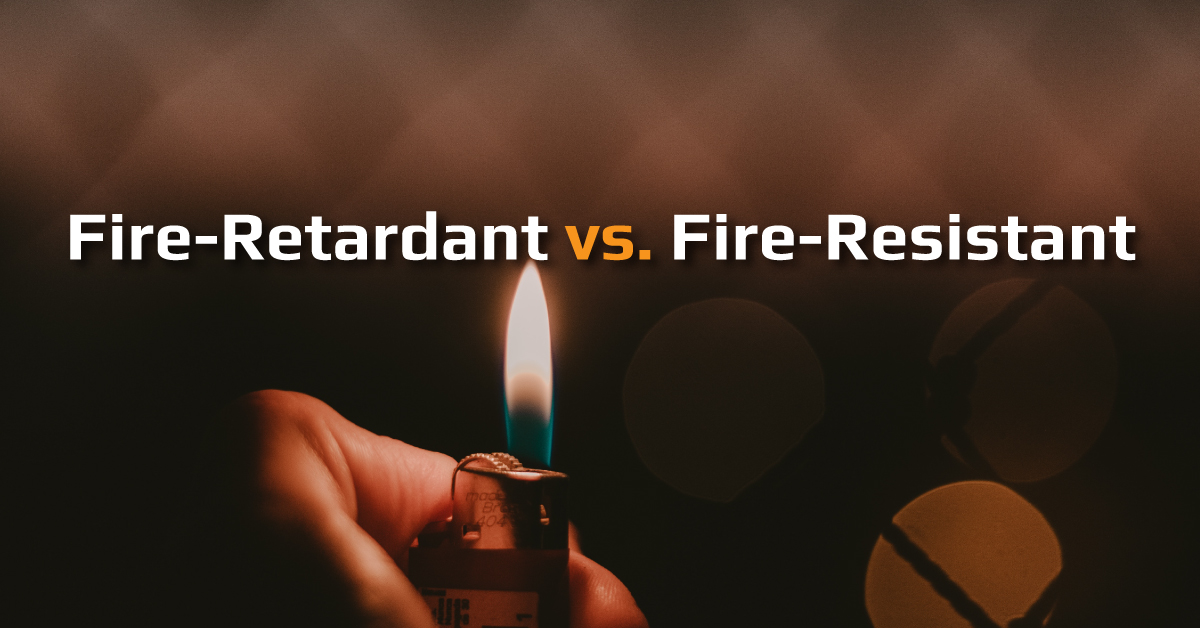Flame Resistant VS Fire Retardant Insulation Materials

As a homeowner, you have a lot of priorities to consider when making decisions about the services you schedule and the materials being installed in your home. While cost-effective and energy-efficient are two considerations that are prevalent for many households, this shouldn’t mean your comfort and safety are sacrificed. Although insulation often falls into the “out of sight, out of mind” mentality for many people, you should treat the decision between materials with the same amount of caution and scrutiny as you would any security system or pest removal service.
When considering what kind of material to have installed in your walls, floors, and ceiling, one criterion your household should be paying attention to is fire safety. Each type of insulation has its own conditions that increase your home’s security, but there are significant differences that need to be reflected depending on your home’s location, needs, and even code requirements. Koala Insulation has put together a basic breakdown of the qualities you should be aware of in common types of materials.
Flame Resistant VS Flame Retardant
One of the first things to understand when considering the fire safety of insulation materials is the difference between fire-resistant and flame retardant. While some people use the terms interchangeably, there are significant differences between the two. As you’re taking the time to choose the right insulation for your home, these distinctions can have a major impact on your decisions.
Flame-resistant materials are considered inherently non-flammable. This means that their resistance to fire is already built within their chemical make-up. On the other hand, flame retardant materials require an additional step in their production to improve the safety of the product. Materials that are flame retardant are chemically treated which gives the insulation slow-burning or self-extinguishing properties. It’s important to remember that while neither flame-resistant nor flame retardant material will necessarily extinguish a severe house fire, they can be a crucial barrier to slow the spread in many situations.
Fiberglass and Mineral Wool
As a homeowner, you most likely recognize fiberglass or mineral wool; blown-in material is the “fluffy” insulation that lines your attic floors. Batt insulation is the cloud-like rectangles that fit in between ceiling joists and walls. These materials are fire-resistant, meaning they are naturally non-combustible. This is true even for significantly deteriorated material, although it’s less effective.
It’s important to note, however, that fiberglass and mineral wool batts may have combustible facings. Facing is the kraft paper or foil that covers some batt insulation products when installed in places like your walls. These materials are additionally covered with a code-approved fire barrier. After discussing your insulation options with a Koala Insulation team, it’s crucial to take note of the location of potentially hazardous materials. Our industry experts can help you better understand the precautions – if any – that need to be considered.
Cellulose
When looking for energy-efficient options that are also safe and cost-effective, many homeowners consider installing blown-in cellulose. This type of insulation is made of 80% recycled material, with a majority of the material used often being recycled newspaper. However, although the materials used are flammable, cellulose material is chemically treated during production. This makes it a flame retardant material.
It’s understandable that some homeowners may believe a flame retardant material is less appealing in comparison to a fire-resistant option. However, it’s important to remember our earlier note: neither type of material is going to stop a serious house fire. Instead, these materials have separate advantages in a fire accident and should be considered equally during your decision process. For more information on cellulose insulation and a controlled demonstration on its response to fire, check out Koala Insulation’s video “Insulation 101: Cellulose Insulation.”
Spray Foam
A common myth about spray foam is that it’s a significant fire hazard for your home because of the chemicals mixed together to create the installed material. While spray foam will ignite at about 700?, there are additional steps taken to make the material flame retardant. Once applied, spray foam is covered in an intumescent coating, often a type of paint. This creates a protective barrier that helps protect the material from high temperatures. For perspective, an intumescent coating is a commonly used product to cover many different combustible objects and materials in both residential and commercial buildings.
Improve Your Safety with Quality Insulation Materials
One of the most important considerations for choosing the best insulation material to put in your home is fire safety. Even though insulation often suffers from the “out of sight, out of mind” mindset for many people, that doesn’t mean it shouldn’t be treated with the same kind of care and scrutiny. It’s important to know what kind of material is being installed and how it can affect your household.
At Koala Insulation of Gateway West, our team is dedicated to increasing comfort and safety for you and your household. This includes ensuring our service not only brings you cost-effective and energy-efficient installations but also materials that have been treated and tested to improve the security of your home. If you have questions or concerns about the material currently in your home, our industry experts can provide details on your current condition and how your safety and comfort can improve.
Find Your Location


Get a quote



